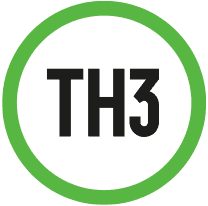Designing Apps in Yorkshire
We’re a design agency based in Hull, Yorkshire. We’ve been designing for over 10 years and we’ve learned a trick or two. Whilst we do graphic design, web design and UI/UX design, for this blog we’re specifically going to focus on the process of app design.
Why is good UI important?
When you improve your user interface, you create a much more pleasant experience for your users, which is critical in this day-and-age. With how many businesses are in today’s market, you’re going to want yours to stand out. If you can create a digital experience that provides the customer with everything they could need, in an easy-to-navigate way with inviting designs then, why wouldn’t you?
Good UI will make your application easy to understand and easy to use – satisfying your audience. It can be the difference between a visitor and a buyer.
All of your designs should be directly linked to your businesses branding, giving the app a together look.
So, how do we do this?
Step 1 – Research
First, we’ll have an in-depth chat with our client. We want to know exactly what they want this app to do, how they are envisioning it functioning, any key requirements that need to be detailed. We’ll run a discovery sprint to brainstorm ideas and get the team on the same page before we go any further into the process – this guarantees success when it comes to the design process.
We’ll also do lots of industry research into our client’s business. This allows us to see the kind of audience we’ll be targeting, what other companies in the same industry are doing and how we can better ourselves.
During phase 1 we want to make sure that the goal of the app is very clear so that we can achieve its desired function. This step is all about research.
Once we’ve got information from the client, we also conduct a focus group with your users to see things from their perspective. They’re going to provide some of the most valuable feedback because they know exactly what they want to get out of downloading the app. Who’s going to suggest ways to improve your user experience better than your users?
Step 2 – Wireframe
Once research has been gathered, we’ll create a wireframe. This is going to be a basic structure of how the app will function. It’s the step before the design phase, and it’s crucial for providing a good user experience.
When creating an app, you need to know if the entirety of the app is free, if there are in-app purchases or subscription options, if you need an e-commerce section or a menu or graph. A great example of an app where you can see some of these features is Flo. It’s a period tracking app including group discussion, articles, a calendar to track your cycle, an option to add symptoms, a subscription option, and many more features to take ideas from!
Competitor research can be a big help when considering how to lay out your application, depending on your intended function. Flo wouldn’t be a good example to look at if you were an ecommerce store, but something like the Pretty Little Thing app might be. This is why we do lots of research into your industry in the first step – so we know what to look for.
After working with you to create a wireframe, we’ll test it amongst users again. Oh yes, we check basically every step with your users! They can provide ‘insider’ insights that you might’ve missed. It would be silly not to take ideas from the individuals that are going to use the app!
We’ll take feedback from clients and users to refine the wireframe until we’ve got an outcome which the client is happy with.
Step 3 – Design
Now that we know the layout, we can start the design process.
This involves creating a design for every page and feature in the wireframe, all with consistent branding. You need this to establish your brand clearly. Branding is very important for creating identifiable features – for example, as soon as a customer sees your company colours they’re going to think of you. You become memorable, which is one of the first steps in creating customer relationships.
Our designs will be adaptive, meaning we’ll test how they’re going to translate onto different screen sizes and create optimised designs for this. You can read more about the importance of adaptive design here.
We’ll also take into consideration that your buttons are going to have to be ‘finger-friendly.’ Meaning enough space that people can click on things individually and easily. The layout should flow well and be easy to navigate.
After skinning the wireframe we’ll create a visual prototype. And guess who will be testing the prototype? That’s right, your users! Every step of the way they’re going to be useful.
We’ll make any changes we need to, based on the feedback we receive from users.
Any final touches can then be made. This is the refinement step, making sure everything is good to go and that the client is happy. We’ll check to make sure all requirements have been met in the design and the desired function has been achieved.
Step 4 – The finish
This one’s simple – hand over to the dev team! Once everything has been signed off and everyone’s happy we’ll hand over the final product to the dev team, ready for them to make it into a reality.
We’d love to help you make your vision a reality, so if you need help with your app design give us a call!

